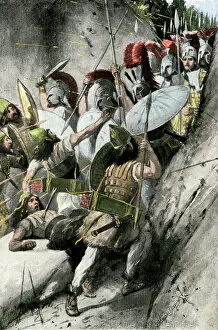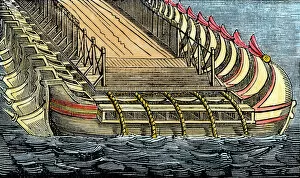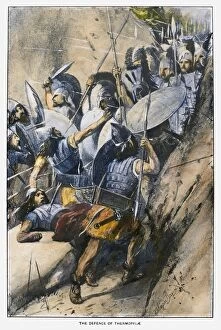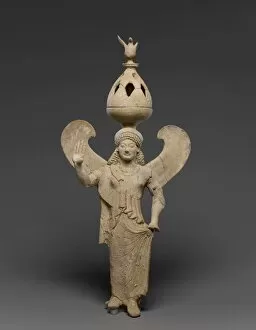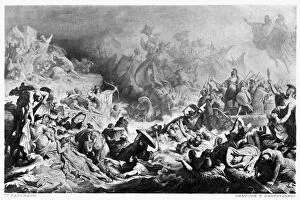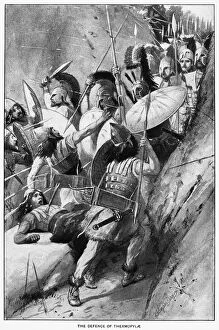480 Bc Collection
In the year 480 BC, ancient Greeks stood valiantly at the pass of Thermopylae, defending their land against all odds
For sale as Licensed Images
Choose your image, Select your licence and Download the media
In the year 480 BC, ancient Greeks stood valiantly at the pass of Thermopylae, defending their land against all odds. This iconic moment in history symbolized their unwavering determination and courage in the face of adversity. Meanwhile, Xerxes constructed a magnificent bridge of boats across the Hellespont, showcasing his grandeur and ambition as he prepared to invade Greece. The Battle of Salamis also took place during this eventful year. Greek triremes sailed into battle with great fervor, engaging in a fierce naval confrontation that would shape the course of history. The Plan du Combat de Salamine Pour le Voyage du Jeune Anacharsis offers us a glimpse into this epic clash between civilizations. Historical records from Cassells Universal History and La Ilustracion Iberica provide vivid depictions of the Battle of Salamis, capturing its intensity and significance for posterity. These accounts serve as reminders of the valor displayed by both sides during this pivotal moment. Amidst these tales of war and heroism, we find glimpses into everyday life through artifacts such as drinking cups attributed to Douris or Kylix fragments dating back to around 480 BC. These objects transport us back in time, allowing us to imagine how people lived during this era. Furthermore, statues like the statuette depicting a bearded man—possibly Tinia—and Attic Red-Figure Lekythos offer insights into ancient Greek artistry and culture. They remind us that beyond battles and conquests lay a rich civilization filled with creativity and expression. Lastly, Attic Panathenaic Amphora along with fragments from an Attic Red-Figure Calyx Krater shed light on religious ceremonies and celebrations that were integral parts of Greek society. As we delve deeper into these historical events and artifacts from 480 BC, we uncover stories not only about wars but also about human resilience, artistic brilliance, and the intricate tapestry of ancient Greek civilization.

